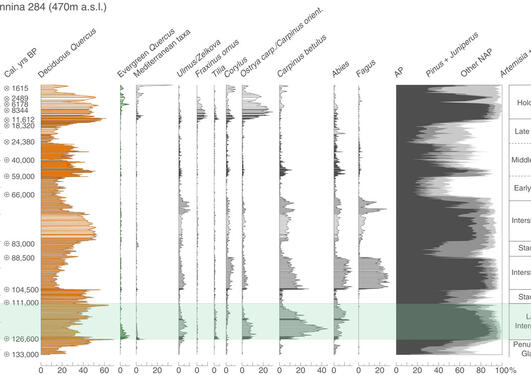IGNEX-eco
Consider a hypothetical scenario. An extensive area of Andean forest—a major biodiversity hotspot—has been devastated by massive unprecedented storms or has been severely degraded by widespread exploitation, logging, or burning. For effective and sustainable management, planners need answers to several critical questions. Will the ecosystem and its biodiversity recover? What will it regenerate into? How quickly will it and its ecosystem services be restored?

Main content
IGNEX-eco expands the ideas of IGNEX (Interglacials and glacials - natural experiments in biodiversity dynamics) to applied questions such as restoration ecology, landscape management, and conservation.
Ecological restoration is rooted in ecological history. To predict and facilitate restoration of damaged ecosystems and their services and biodiversity, knowledge is essential of the past state of the ecosystem; what has happened to it; what determines long-term ecosystem assembly (‘assembly-rules’), composition, structure, biodiversity, and turnover; and what processes influence the kinds and proportions of species in ecosystems.
The last 1 Myr of the Quaternary have been characterised by alternating interglacial stages with climatic conditions broadly similar to, or warmer than, the recent pre-industrial past, and much colder glacial stages during which ice-sheets covered large parts of North America, northern Europe, and Eurasia and atmospheric CO2 concentrations were 30% lower than during the interglacials. Long pollen-stratigraphical sequences from Colombia, Greece, and NE Russia with 10–25 glacial–interglacial cycles in continuous sequences will provide a unique series of ‘natural experiments’ to study ecosystem assembly and change and associated biodiversity dynamics and compositional turnover.
IGNEX-eco will attempt to determine what controls ecosystem assembly over time-scales of tens of thousands of years and whether there are long-term ecological legacies such that the composition of an interglacial ecosystem is dependent upon the prededing glacial.
Vivian Felde is the post-doctoral fellow on this project and the PI is John Birks. It runs from 1 January 2016 until 31 December 2018 and is funded by the VISTA collaboration between Statoil and the Norwegian Academy of Science and Letters (project 6166).
